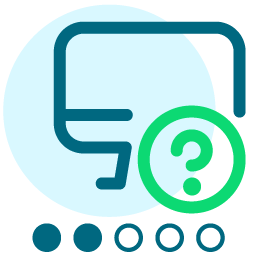SYBUNT 6+ years ago by giving level
Options
Hi, I'm doing more segmentation. I need to identify people that did not give in the past 5 years but gave 6+ years ago. I think I can do that pretty easily with a summary of gifts by date on a query.
However, I need to further break that down by giving level. If someone gave $1000+ any year beyond 6+ years ago would be one segment, someone who gave $500 to $999.99 any year beyond 6+ years ago would be another segment...and so on ....for a total of 5 giving levels within that 6+ years ago group.
If it were only a few years, I would just create a summary for each year. But, since it is 6+ years ago, I can't really do that.
What am I missing (is this possible)?
thanks!
However, I need to further break that down by giving level. If someone gave $1000+ any year beyond 6+ years ago would be one segment, someone who gave $500 to $999.99 any year beyond 6+ years ago would be another segment...and so on ....for a total of 5 giving levels within that 6+ years ago group.
If it were only a few years, I would just create a summary for each year. But, since it is 6+ years ago, I can't really do that.
What am I missing (is this possible)?
thanks!
Tagged:
0
Comments
-
It depends a bit on how many records you're looking at. In my database, I'd probably stick a temporary Attribute on the records found in your first paragraph. Then pull a Gift Query of Constituents with that Attribute. Export that data (in my case, I'd choose MS Access, but if you're not familiar with that program, Excel would probably do) and outside of RE, you can get a better look.
When you add your Attribute, either use a Table for the Description, or use a Date of 9/30/2016. Outside of RE, sort by Gift Amount, and look at those with a gift of $1k+...update the RE Attribute (you can do a Global Change, using ConstID one of in a new Query) by changing the Description or Date (to 10/1/2016 for the first segment, 10/2/2016 for the second segment, etc.). In the Constituent Query where you're pasting the ConstIDs of those you've determined are in a particular segment, you include criteria of Attribute Description (or Date) equals ___ (9/30/2016 in my example). This means when you move to your second segment, and someone in the first segment appears again, RE will exclude them from the query due to the Attribute criteria.
You'd need to know whether someone who gave $500 6 years ago and $1k 7 years ago falls in the $1k+ bucket or the $500-999 bucket. (My plan assumes that you would consider the largest gift, not the most recent. You can include a Summary Field of Number of Gifts 6+ years ago, so you'll know how many times each constituent appears in your data, in case you need to find and examine other gifts.)
A little tedious, but for me, this makes sense, and would get the job done. Do be aware that those Gift Summary Fields often need to include Gift Type one of criteria or they will automatically "think for you" and that's often not what I'm looking for.
If I'm not making sense, let me know and I'll do up some screen shots to send you.
0 -
Yes it is possible. There are going to be a few steps. I see two ways to go.Pam Gealy:
Hi, I'm doing more segmentation. I need to identify people that did not give in the past 5 years but gave 6+ years ago. I think I can do that pretty easily with a summary of gifts by date on a query.
However, I need to further break that down by giving level. If someone gave $1000+ any year beyond 6+ years ago would be one segment, someone who gave $500 to $999.99 any year beyond 6+ years ago would be another segment...and so on ....for a total of 5 giving levels within that 6+ years ago group.
If it were only a few years, I would just create a summary for each year. But, since it is 6+ years ago, I can't really do that.
What am I missing (is this possible)?
thanks!
Either you build a series of queries (that can then be used over and over throughout time) or you can utilize a couple of canned reports to get your results.
Personally, I would build the queries because they are good for lots of different reporting. I always keep them as a staple in the pantry of queries.
Make a query for each giving level window (don't put dates just amounts). And a query for your SYBUNTS. Use the merge tool to cull out each giving level. The reason I suggest this is because you can pull it anytime.
The other way is to use the canned SYBUNT report to pull the info, choose have it doing a query output. Take that query and pull it through a Donor Category Report and you will get the different levels as you have them set up in the tables.
Depending on what you are using the segmenting for -- may also determine which path you choose for pulling your info. Try both and see which one works for your needs.0
Categories
- All Categories
- Shannon parent
- shannon 2
- shannon 1
- 21 Advocacy DC Users Group
- 14 BBCRM PAG Discussions
- 89 High Education Program Advisory Group (HE PAG)
- 28 Luminate CRM DC Users Group
- 8 DC Luminate CRM Users Group
- Luminate PAG
- 5.9K Blackbaud Altru®
- 58 Blackbaud Award Management™ and Blackbaud Stewardship Management™
- 409 bbcon®
- 2.1K Blackbaud CRM™ and Blackbaud Internet Solutions™
- donorCentrics®
- 1.1K Blackbaud eTapestry®
- 2.8K Blackbaud Financial Edge NXT®
- 1.1K Blackbaud Grantmaking™
- 527 Education Management Solutions for Higher Education
- 1 JustGiving® from Blackbaud®
- 4.6K Education Management Solutions for K-12 Schools
- Blackbaud Luminate Online & Blackbaud TeamRaiser
- 16.4K Blackbaud Raiser's Edge NXT®
- 4.1K SKY Developer
- 547 ResearchPoint™
- 151 Blackbaud Tuition Management™
- 61 everydayhero
- 3 Campaign Ideas
- 58 General Discussion
- 115 Blackbaud ID
- 87 K-12 Blackbaud ID
- 6 Admin Console
- 949 Organizational Best Practices
- 353 The Tap (Just for Fun)
- 235 Blackbaud Community Feedback Forum
- 55 Admissions Event Management EAP
- 18 MobilePay Terminal + BBID Canada EAP
- 36 EAP for New Email Campaigns Experience in Blackbaud Luminate Online®
- 109 EAP for 360 Student Profile in Blackbaud Student Information System
- 41 EAP for Assessment Builder in Blackbaud Learning Management System™
- 9 Technical Preview for SKY API for Blackbaud CRM™ and Blackbaud Altru®
- 55 Community Advisory Group
- 46 Blackbaud Community Ideas
- 26 Blackbaud Community Challenges
- 7 Security Testing Forum
- 3 Blackbaud Staff Discussions
- 1 Blackbaud Partners Discussions
- 1 Blackbaud Giving Search™
- 35 EAP Student Assignment Details and Assignment Center
- 39 EAP Core - Roles and Tasks
- 59 Blackbaud Community All-Stars Discussions
- 20 Blackbaud Raiser's Edge NXT® Online Giving EAP
- Diocesan Blackbaud Raiser’s Edge NXT® User’s Group
- 2 Blackbaud Consultant’s Community
- 43 End of Term Grade Entry EAP
- 92 EAP for Query in Blackbaud Raiser's Edge NXT®
- 38 Standard Reports for Blackbaud Raiser's Edge NXT® EAP
- 12 Payments Assistant for Blackbaud Financial Edge NXT® EAP
- 6 Ask an All Star (Austen Brown)
- 8 Ask an All-Star Alex Wong (Blackbaud Raiser's Edge NXT®)
- 1 Ask an All-Star Alex Wong (Blackbaud Financial Edge NXT®)
- 6 Ask an All-Star (Christine Robertson)
- 21 Ask an Expert (Anthony Gallo)
- Blackbaud Francophone Group
- 22 Ask an Expert (David Springer)
- 4 Raiser's Edge NXT PowerUp Challenge #1 (Query)
- 6 Ask an All-Star Sunshine Reinken Watson and Carlene Johnson
- 4 Raiser's Edge NXT PowerUp Challenge: Events
- 14 Ask an All-Star (Elizabeth Johnson)
- 7 Ask an Expert (Stephen Churchill)
- 2025 ARCHIVED FORUM POSTS
- 322 ARCHIVED | Financial Edge® Tips and Tricks
- 164 ARCHIVED | Raiser's Edge® Blog
- 300 ARCHIVED | Raiser's Edge® Blog
- 441 ARCHIVED | Blackbaud Altru® Tips and Tricks
- 66 ARCHIVED | Blackbaud NetCommunity™ Blog
- 211 ARCHIVED | Blackbaud Target Analytics® Tips and Tricks
- 47 Blackbaud CRM Higher Ed Product Advisory Group (HE PAG)
- Luminate CRM DC Users Group
- 225 ARCHIVED | Blackbaud eTapestry® Tips and Tricks
- 1 Blackbaud eTapestry® Know How Blog
- 19 Blackbaud CRM Product Advisory Group (BBCRM PAG)
- 1 Blackbaud K-12 Education Solutions™ Blog
- 280 ARCHIVED | Mixed Community Announcements
- 3 ARCHIVED | Blackbaud Corporations™ & Blackbaud Foundations™ Hosting Status
- 1 npEngage
- 24 ARCHIVED | K-12 Announcements
- 15 ARCHIVED | FIMS Host*Net Hosting Status
- 23 ARCHIVED | Blackbaud Outcomes & Online Applications (IGAM) Hosting Status
- 22 ARCHIVED | Blackbaud DonorCentral Hosting Status
- 14 ARCHIVED | Blackbaud Grantmaking™ UK Hosting Status
- 117 ARCHIVED | Blackbaud CRM™ and Blackbaud Internet Solutions™ Announcements
- 50 Blackbaud NetCommunity™ Blog
- 169 ARCHIVED | Blackbaud Grantmaking™ Tips and Tricks
- Advocacy DC Users Group
- 718 Community News
- Blackbaud Altru® Hosting Status
- 104 ARCHIVED | Member Spotlight
- 145 ARCHIVED | Hosting Blog
- 149 JustGiving® from Blackbaud® Blog
- 97 ARCHIVED | bbcon® Blogs
- 19 ARCHIVED | Blackbaud Luminate CRM™ Announcements
- 161 Luminate Advocacy News
- 187 Organizational Best Practices Blog
- 67 everydayhero Blog
- 52 Blackbaud SKY® Reporting Announcements
- 17 ARCHIVED | Blackbaud SKY® Reporting for K-12 Announcements
- 3 Luminate Online Product Advisory Group (LO PAG)
- 81 ARCHIVED | JustGiving® from Blackbaud® Tips and Tricks
- 1 ARCHIVED | K-12 Conference Blog
- Blackbaud Church Management™ Announcements
- ARCHIVED | Blackbaud Award Management™ and Blackbaud Stewardship Management™ Announcements
- 1 Blackbaud Peer-to-Peer Fundraising™, Powered by JustGiving® Blogs
- 39 Tips, Tricks, and Timesavers!
- 56 Blackbaud Church Management™ Resources
- 154 Blackbaud Church Management™ Announcements
- 1 ARCHIVED | Blackbaud Church Management™ Tips and Tricks
- 11 ARCHIVED | Blackbaud Higher Education Solutions™ Announcements
- 7 ARCHIVED | Blackbaud Guided Fundraising™ Blog
- 2 Blackbaud Fundraiser Performance Management™ Blog
- 9 Foundations Events and Content
- 14 ARCHIVED | Blog Posts
- 2 ARCHIVED | Blackbaud FIMS™ Announcement and Tips
- 59 Blackbaud Partner Announcements
- 10 ARCHIVED | Blackbaud Impact Edge™ EAP Blogs
- 1 Community Help Blogs
- Diocesan Blackbaud Raiser’s Edge NXT® Users' Group
- Blackbaud Consultant’s Community
- Blackbaud Francophone Group
- 1 BLOG ARCHIVE CATEGORY
- Blackbaud Community™ Discussions
- 8.3K Blackbaud Luminate Online® & Blackbaud TeamRaiser® Discussions
- 5.7K Jobs Board



